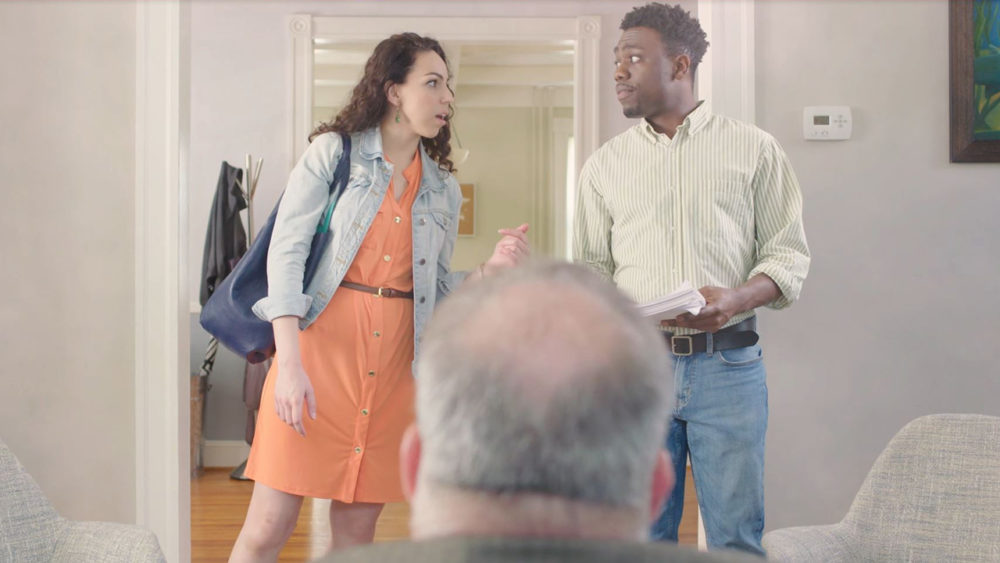If you’re getting a roommate, you might end up spending a lot of time together, so choosing a good one is something you probably want to give a lot of thought to.
The same is true for the energy that keeps your lights on. It’s why we just released a new video on the topic. The good news is that we’ve got a big range of clean options when it comes to choosing our electricity supply, as consumers and constituents, from the personal to the national. Options that can reduce waste, save money, and forestall the worst effects of climate change.
In other words, electricity choices we can all live with.
Why choose?
Why should we care about where our electricity comes from? Because how we get our power can have a lot of implications for our health, the environment, our communities, and the economy.
It’s good to know about our choices, and to say yes to better options whenever we have the chance. I’ll start with what you can do at home, scale up to the community level, and finish with action you can take to help the country choose wisely.
Choosing energy at home
Like the choice of roommate, some of the options for switching up our electricity mix are really close to home, whether it’s buying green power, embracing rooftop solar, or tapping into solar without a roof.
Green power. Would you invite just anyone to live with you? It used to be that you had to accept whatever power sources your electric utility served up, and that was that.
Not anymore. Some states have reconfigured their power sector in ways that allow homes and businesses to choose from a variety of electricity providers or offerings. That gives you a say in what types of electrons your dollars are encouraging. And that can include green power options, which allow you to select renewable energy sources like solar and wind energy.
Even if you don’t have green power options through your utility, you can buy renewable energy certificates/credits (RECs) to overlay on whatever your utility is giving you. Your REC purchases can help drive the development of more renewable energy by rewarding those projects for the fact that they’re different from (and better than!) fossil fuel-powered generators. (See here for a handy video on how green power/RECs work.)
Whether you choose green power or buy RECs, your local utility still provides you with the service, via the same poles and wires, and keeps the lights on (for you and your fellow co-habitators).
Solar on the roof. Some households might have the option of generating some of their own electricity, generally via a home solar array. This option is more involved, and open only to those who have a suitable roof. (Details on my own solar journey are here, here, and here.) But having a device overhead that churns out kilowatt-hours directly from sunlight can be a pretty neat way of connecting with the source of your electricity.
Community solar. Fortunately for those looking to connect with solar without having it overhead, there’s another option. A community solar project involves a bunch of subscribers—homeowners or businesses—getting utility bill credits from a larger solar array somewhere other than on their roofs. A colleague described community solar here. Community solar can bring a lot of the benefits of solar, without the roof.
OUR CHOICES: Not all these options are available everywhere, or to everyone. But if one or more is, they can be good ways to make a difference right at home.

Choosing energy in your community
Focusing on communities brings new options into the picture when it comes to electricity choice.
Community Choice Aggregation. How about making it easier for people to embrace clean energy by making it the default option? Community Choice Aggregation, also known as Community Choice Energy or municipal aggregation, involves a community choosing a default electricity supplier for the whole town that is different from the poles-and-wires utility. And the ability to shift to a renewables-rich electricity supply is often a key driver. Homes and businesses still generally have the power to opt out of the new default if they choose. But for the rest, once it’s in place, community-level aggregation can make choosing clean energy easy as doing nothing.
Community Empowerment. Another, budding idea involves a community using its financial strength to accelerate the switch to clean energy. With Community Empowerment, communities help drive more renewables by entering into long-term contracts with particular clean energy projects. It doesn’t necessarily (directly) change the energy the community will be using, since the electricity and other outputs from the contracts might get sold off, with the community getting debited or credited for any difference from the contract price. But the community’s investment via the contracts help get more renewable energy projects underway.
OUR CHOICES: At the community level, the choice part for us comes in pushing our communities down one (or both) of these paths, so that we move toward clean energy together.

Voluntary green power purchases—via utilities, through REC purchases, and now through CCAs—have been an important driver of renewable energy, and a good complement of required utility purchases (the “compliance” market). (Source: NREL)
Choosing energy in your state
Each new level is a bigger lift, but also offers a bigger impact. That’s the way it is with actions at the state level.
Renewable electricity standards. RESs (or renewable portfolio standards/RPSs) have been a really important driver of renewables for at least two decades now, and 29 states and Washington, DC, have them in place. Typically, a state sets a schedule for the increasing amount of renewable electricity that an electricity supplier (utility or other) has to use in meeting their customers’ needs.
And the bar is getting set higher all the time. There are now at least eight states (plus DC and Puerto Rico) that have committed to switching to 100% clean electricity over the next 2-3 decades.
Long-term contracts. Like at the local level with Community Empowerment, long-term contracts at the state level are another way of driving positive change in the power sector. Several states are contracting (directly, or through their utilities) for power from clean energy sources as a way of offering price stability and potentially lower pricing for electricity customers, and oomph for those technologies—including newer ones like offshore wind.
Integrated Resource Planning. This one is a little more obscure, but is where a lot of the action happens with utilities in many states. IRPs involve utilities spelling out what mix of energy sources they’re thinking of using over the decade or two to meet electricity demands and satisfy public policy obligations. As a colleague describes it, IRPs “determine where consumers’ electricity will come from, how clean that power will be, and whether states will meet their clean energy and climate goals.” If the process is public enough (it should be), stakeholders like you and me can weigh in on behalf of clean energy.
OUR CHOICES: Our job as electricity choosers is to push for the enabling policies, or other state action, to bring these tools into effect, or, where they already exist, to increase their level of ambition.

Choosing energy in your nation
And then there’s our country.
Renewable electricity standard. The RES idea that has been so well proven at the state level is now in play at the federal level, along with a clean energy standard proposal, which is a variant of the idea. UCS’s analysis of the national RES proposal in Congress right now found benefits in terms of energy diversity (less risk of overreliance on natural gas), economic development, consumer benefits, and pollution reduction.
OUR CHOICES: Here, too, our job is clear: The RES won’t happen without Congress… Fortunately, it’s easy to tell them you care. First, ask your senator to support a national standard that would commit the US to producing 50% of its energy from clean sources by 2035. After you’ve taken the action, please share the video and this blog with friends and family and ask them to act at CleanUpTheGrid.org.
Choosing unstoppability
In some ways, choosing your electricity is a lot lower pressure than choosing your roommate. You don’t have to worry about whether you have compatible tastes in music, or can coordinate schedules, or have the same sense of what’s acceptable when it comes to management of dirty laundry or dirty dishes. Electrons are electrons.
Except that they’re not. Because where those electrons come from matters. A lot.
So it’s good to know that we have more options for shaping our energy destiny than we might realize, and that we can do a whole lot better than business as usual—just as we might be able to do better roommate-wise than just grabbing the first person who wanders in, no questions asked.
The “Unstoppable” image below can be seen on billboards in multiple US airports starting next week. If you happen to see it, remember that it’s not talking just about wind turbine blades or wind farms or the tremendous progress clean energy is making. It’s talking about us, about what happens when we choose to change the way we make electricity. About the power (as it were) we have to make a difference in a key sector of our society.
We wouldn’t take choosing our roommate lightly, and we shouldn’t take lightly what electricity we let into our homes and communities either.


